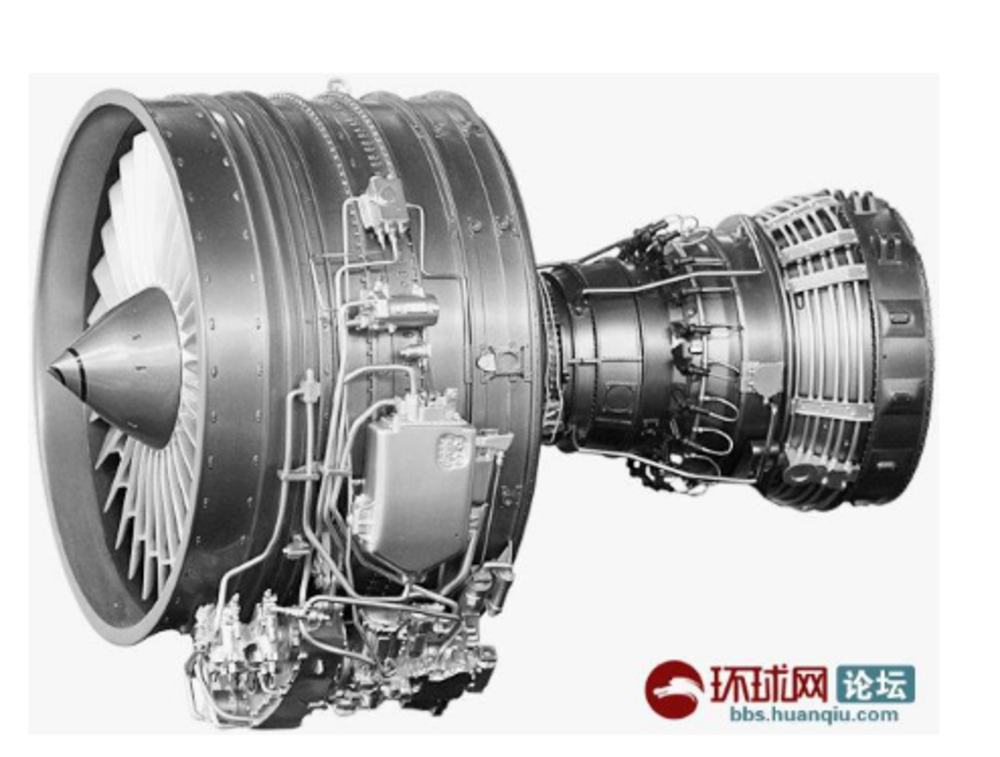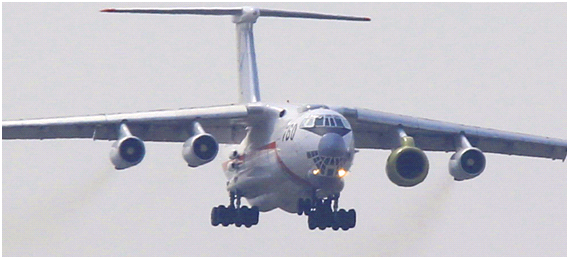Leeham News and Analysis
There's more to real news than a news release.
Bjorn’s Corner: The Chinese aircraft engine industry
October 07, 2016, ©. Leeham Co: In our Corners on East bloc aeronautical industries, we will now look at the Chinese civil aircraft engine industry.
The Chinese engine industry is closely modeled after the Chinese aircraft industry that we looked at last week. It is organized as divisions and later subsidiaries to the major aircraft companies. Contrary to the Chinese aircraft industry, it has had major problems in gaining the necessary know-how to start developing and producing its own designs.
The industry has built Soviet designs on license since the 1950s and only recently managed to present functional own designs, after many failures.
Industry history
The Chinese engine industry was part of the same machine building industry as the aircraft industry. The first jet engine that was produced under license was the Klimov VK-1 (for the Mig-17), a Russian copy of the Rolls-Royce Nene.
China later built the Tumansky RD-9 jet engine under license for their locally produced Mig-19, the Shenyang J-6. The production was done by the same companies that produced the aircraft in their engine production departments.
Gradually the Chinese aircraft industry started to try and make modifications to engines they built under license. It did not go to well. Engine development and changes were much harder to do than making adaptations to aircraft.
The locally adapted engines were not reliable, so the Chinese military continued to source engines from Russia/Ukraine for their aircraft projects.
Engines were the Klimov RD33 (the MIG-29 engine) for the locally developed canard aircraft, J-10, which looks like a larger Lavi, and the J-17 Thunder; the Saturn AL-31 for license-built and locally developed copies of the Su-27 Flanker; and the Ivchenko-Progress/Motor Sich AL-25 (Yak-42 engine) for the Hongdu L-11 jet-trainer. The AL-25 is license-produced as the WS-11. The other engines are imported from Russia.
There were many attempts to develop and produce an indigenous engine. As there was no Chinese commercial aircraft development of any scale, the Chinese engine industry/state focused on getting self-sufficient on military engines.
Most projects died out when no reliable engine came out after 20-30 years of effort. The first local program that finally managed to produce an engine which had acceptable reliability was the Shenyang Engines WS-10.
The WS-10 project was started by the strongman after Mao Tse Tung’s death, Deng Xiaoping, in 1986. The target was to replace the 30klbf Saturn AL-31 for the Chinese Flanker variants.
The WS10 is a low bypass, two-shaft engine in the 30klbf class. Its core is modeled after the CFM56 (from the GE F-101), which China could examine in 1986. It took until 2009 for the engine to get a thrust and reliability level that it could replace the AL-31 on the local Flanker variant J-11.
The engine was developed and produced by the Shenyang-Liming Aero Engine Group, a unit of Shenyang Aircraft in the AVIC group. China’s engine companies were structured as units of major aircraft companies in AVIC.
The main companies were: Shenyang Liming Aero-Engine Group, doing engines for the Shenyang Aircraft Company; Xi’an Aero-Engine Group, doing engines for the Xi’an Aircraft company; and Chengdu Aero-Engine Group/Guizhou Liyang Aero-Engine Group, doing engines for the Chengdu Aircraft Company.
This division of focus was in line with Mao Tse Tung’s ideas of splitting of industry in many smaller units. It was kept to foster progress through competition when Deng Xiaping got in power. The problem was that turbine engines require massive investment in technology and production equipment.
None of the engine companies had the critical mass to keep pace with the Western technology-driven companies or companies/agencies in Russia/Ukraine. The result has been an engine industry that has not been able to produce virtually any successful engine programs over the last four decades.
China engaged Ukraine to come in and help them with engine technology in recent years. Western companies have been hesitant, given China’s handling of intellectual propriety rights.
Rolls-Royce licensed the Spey RB-168 as the local WS-9 (used for a local strike aircraft JH-7, looking like a large SEPECAT Jaguar) after China tried unsuccessfully to copy it. SAFRAN group’s Turbomeca licensed turboshaft engines like the Ariel for helicopter applications.
Civil Turbofans
Based on the WS-10 core, Shenyang Liming Aero-Engine Group developed a high bypass variant, the WS-20. Target application is the military heavylift transporter Y-20 (similar to a Boeing C-17), which presently is using low bypass Russian D-30 engines (the Tu-154 engine).
This is the first high bypass engine development in China with an estimated By-Pass Ratio of around 5-6. Thrust is around 30klbf. With the original WS-10 core modeled after the CFM56, the high bypass variant now has data which resembles the CFM56-5.
The engine is presently on flight test on an IL-76, Figure 2.
WS-20 is also the right size for a COMAC C919 application, but a full generation behind the CFM LEAP-1C engine, which was chosen for the aircraft. The engine has therefore not been accepted as an option.
AVIC Commercial Aircraft Engines (ACAE)
China spun out a separate civil engine company, ACAE, from AVIC Engine in 2009. The idea was to develop competitive commercial engines by engaging in co-operation with Western manufacturers.
The company presented the 30klbf engine concept, CJ-1000, aimed at the C919. Performance should be in the LEAP-1C class with EIS around 2025. Engine concepts for the Chinese-Russian wide-body (CJ-2000) and ARJ21 (CJ-500) have also been presented.
As no Western partner has been interested in cooperating with ACAE, the creation of a LEAP-class engine around 10 years after the EIS of the CFM LEAP seems more than ambitious. With no technology injection from established engine companies, the future of ACAE and its engines seems shaky.





A traditional weakspot of the Chinese for decades now. They know all to well and have pumped billions into solving it. Apparently money can’t replace the western design organisations with their decades of experience, innovation, material knowledge, CFD tools and disipline.
“The result has been an engine industry that has not been able to produce virtually any successful engine programs over the last four decades”
Says it all really. The amount of taking IP is even bigger than I thought, yet that too doesnt lead anywhere.
Somebody here ever read “The Sand Pebbles” ? ( Richard McKenna )
Three or 4 times. First was Saturday Evening post when I was 7 or so (avid early reader)
Not sure I see the context. Bright guy of any nationality can be an engineer, they made me one and I am not that bright.
I don’t design engines.
Interesting they can shove rockets into orbit with satellites but can’t make a modern engine.
N. Korea does that to.
Rockets are easy, they run hot for minutes, don’t have an inlet and are thrown away. Engines run for thousands of hours without maintenance.
Know the “Sand Pebbles” movie by heart, too. Some changes have taken place, but in many ways it is still an “evolving” Third World situation when you consider the masses (patchwork quilt)and “the outside forces” pulling her in many directions (trying to paraphrase the theme-setting-discussion on the steamer as Jake travels upriver to the Gunboat). And we all know how this story ends.
Its not just the aircraft industry that is below par. This Qantas jet didnt get a requested emergency service response for 20 min after it was left stranded on a main runway at Shanghai after landing with a serious hydraulic leak meant its nose wheel steering was inoperative
blogs.crikey.com.au/planetalking/2016/10/07/qantas-emergency-shanghai-not-atsb-site-yet/
And they forgot to get stairs fort the American President when he landed.
They did not “forget” that one 🙂
I think China has over come the jet engine problem.The J-20B and the J-31B will used the WS-15 engines that can super cruise without after burner.The WS-15 has a 40,000lbs. thrust and a thrust to weight ratio of 10.The WS-15 use a single crystal (Ti45Al8Ni) alloy turbine blade and a graphene powder turbine blade.AECC will developed a graphene-titanium-aluminum alloy turbine blade.The areo space future belongs to Wang Zhengou turbo-scram jet engine.A VLRAAM flew at mach 6 speed and hit a fast moving drone 300 miles away base on the turbo-scram jet engines